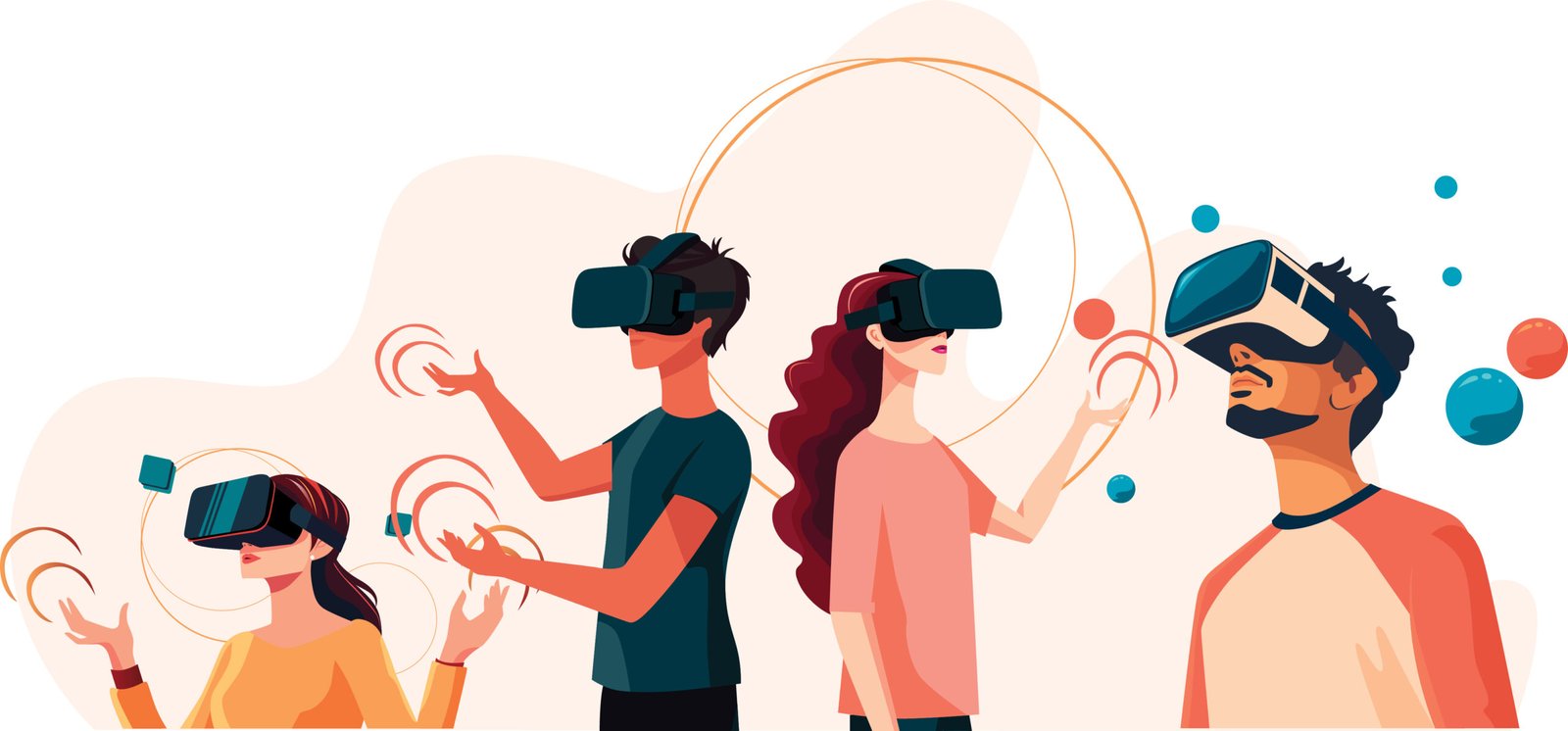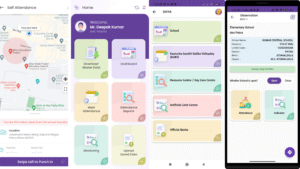
Understanding Augmented Reality (AR): A Detailed Overview
A transforming tool combining digital knowledge with the real-world surroundings in real-time is augmented reality (AR). AR improves the user’s view of their current surroundings by overlaying digital features, such as sights and sounds, unlike virtual reality (VR), which generates a fabricated environment. An immersive experience combining digital knowledge with the physical environment arises from this integration.
From enhancing decision-making procedures to providing entertainment, AR has numerous applications in various disciplines. It can provide consumers with additional information or change the environment naturally. The capacity of AR to include digital, three-dimensional (3D) elements into the user’s real-world view is among its most important benefits.
Read on to know more…
Augmented Reality’s Mechanisms
Through devices like smartphones, smart glasses, or headsets, AR technology provides several sensory inputs—visual elements and sound, among other things. AR’s data overlays the user’s perspective of their surroundings to create an immersive experience whereby the digital layer interacts with the physical world. AR can either hide some facets of the real-world environment or improve some of its features.
Boeing Computer Services, Research, and Technology employee Thomas Caudell originally used the phrase “augmented reality” in 1990. He spoke of head-mounted displays that enabled electricians to build intricate wire systems to assist in assembly. AR initially found commercial use in 1998 when the yellow first-down marker was used in televised football games, allowing viewers to follow the game more easily.
AR Technology and Use Cases
From mixed-reality headsets and heads-up displays (HUDs) in cars to smartphone games, several AR applications are now rather prevalent. AR technology has been embraced in sectors including healthcare, public safety, oil and gas, tourism, and marketing to enhance their operations and offerings.
AR’s hardware components
Among the several hardware components used in AR technology are processors, sensors, screens, and input devices. With cameras, accelerometers, Global Positioning System (GPS) sensors, and digital compasses all included, smartphones and tablets are ideal for AR. For example, although a compass identifies device orientation, GPS can assist AR applications in locating a user.
More sophisticated AR systems—those used in military training—may have gestures, object recognition, and machine vision, among other things. Should the user’s equipment lack sufficient processing capability, data processing may need to be offloaded to external devices since AR might demand considerable computer capability.
Markerless and marker-based AR
Two basic groups define AR applications: marker-based and markerless.
- Marker-based AR is the technique whereby AR apps link digital data or animations to real-world markers using specialized 3D programs. An AR software or browser plugin starts to show pertinent digital stuff over the physical world when it finds a known marker.
- Since it does not depend on particular markers, markerless AR is a more sophisticated method. Using a recognition algorithm, the AR device must find items in its range of view; subsequently, it uses onboard sensors to combine digital images with the user’s surroundings. This approach lets digital components be more smoothly incorporated into actual environments.
Variations between AR and VR
Although they tackle things differently, augmented reality and virtual reality both help to improve user experiences.
- Augmented reality (AR) overlays virtual information on top of the current real-world surroundings, creating a basis. Less constrained experiences come from AR devices, which range from glasses to head-up displays (HUDs) to cell phones.
- Using VR headsets allows users to explore a completely virtual environment. Through visual and aural signals, these headsets completely submerge users in a virtual environment and create actual sensations.
- One important difference is how consumers engage with their surroundings. While AR loads digital data onto the user’s real-world view, VR transports people into a digital environment. AR might, for instance, overlay a web browser window in a user’s living room, whereas VR would create a whole new world.
- Devices like Apple Vision Pro and Meta Quest 3 also use a “passthrough” approach to show what the front-facing cameras perceive on the helmet screen, therefore merging the real-world surroundings with digital content.
Main Applications for AR Technology
The adaptability of AR qualifies it in many different fields, including:
- AR lets consumers see goods in their homes before they buy. Apps can show how furniture or décor will look in a certain room.
- AR lets users animate their faces on social media or overlay game components in real-world surroundings, therefore enhancing video gaming experiences.
- AR-based navigation can show route directions over a live road view, therefore offering real-time directions and information on surrounding companies.
- Mobile AR apps let the user choose points to measure distances between real-world items.
- AR allows artists and builders to see their creations in actual surroundings.
- AR lets museum visitors investigate historic sites using 3D models and helps archaeologists rebuild sites.
Practical Illustrations of AR

Over the years, some AR programs have become rather well-known, including:
- Before making a purchase, users of this app can snap a picture of a room and view how a good might look in that environment.
- Acting as a digital tape measure, the Apple Measure App lets users find object distances in their surroundings.
- Popular social media tool transforms user images and videos in original creative ways with AR filters.
- Mounted atop helmets, the U.S. Army Tactical Augmented Reality (TAR) eyepiece guides troops across the landscape and aids in location identification.
- Both Apple Vision Pro and Meta Quest 3 combine mixed reality, augmented reality, and virtual reality. They let users engage with digital projections in their surroundings by gestures and offer passthrough capability.
The Development of AR Technology In 2025
For developers creating AR apps for iOS and Android, Apple’s ARKit and Google’s ARCore are potent toolsets. For accurate location-based AR experiences, ARKit 6, for example, enables 4K rendering and depth mapping while ARCore’s Geospatial API incorporates data from Google Earth and Street View.
Devices such as Apple Vision Pro and the Meta Quest 3 have enhanced comfort and utility, therefore enabling users to engage in excellent AR interactions. With its expensive pricing, Apple Vision Pro targets early adopters and developers; Meta Quest 3 seeks a larger audience with its more reasonable price range.
AI is growing in relevance for AR applications’ face and room scanning, object detection, and text recognition, among other uses. Through more precise and responsive AR interactions, artificial intelligence improves the user experience.
The Bottom Line
By layering digital content onto the physical world, augmented reality is changing how consumers engage with their surroundings. From entertainment and gaming to military training and archaeology, AR is finding increasing importance in daily life. AR’s promise is only starting to be realized as new technologies, including ARKit, ARCore, and enhanced AR headsets, keep surface. AR’s future promises more immersion, deeper interactivity, and a seamless blending of the digital and physical worlds.
FAQs
How is augmented reality (AR) different from virtual reality (VR)?
Augmented reality (AR) is a device that adds digital information or interactive elements to a person’s view of the real world. Virtual reality, on the other hand, puts people in a fake world where they can’t see what’s going on outside.
Do you know of any ways that augmented reality could be used in the real world?
Virtual try-ons for clothes, navigation overlays, and fully immersive games are just a few of the many ways that augmented reality technologies can be used. It’s also used by museums to let visitors look at 3D reconstructions of historical places, and architects use it to help them see how their work fits into the bigger picture.
What kinds of gadgets are used for virtual reality most of the time?
Apps, smart glasses, and special tools are just some of the tech that can be used to enjoy augmented reality. Apple Vision Pro and Meta Quest 3 are two examples of mixed-reality glasses that use both virtual and augmented reality to make the experience more real.






